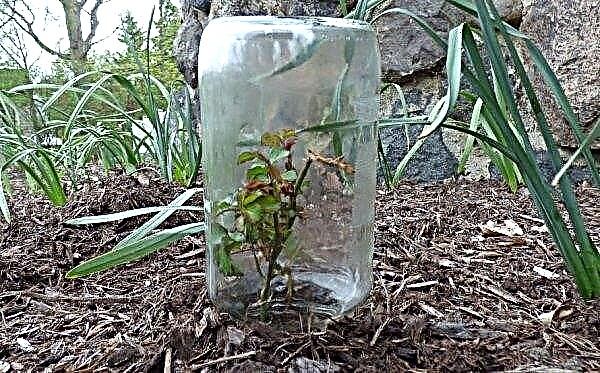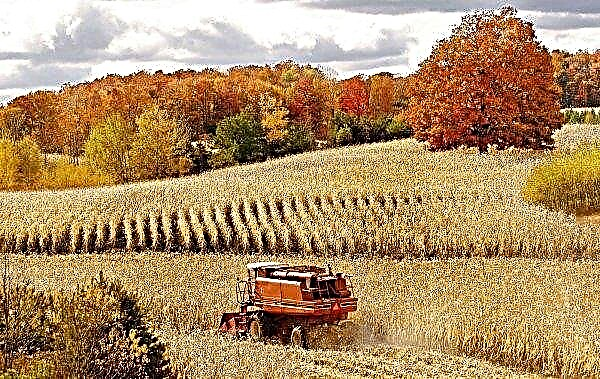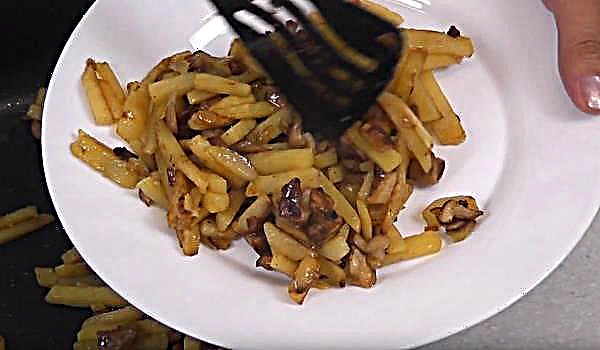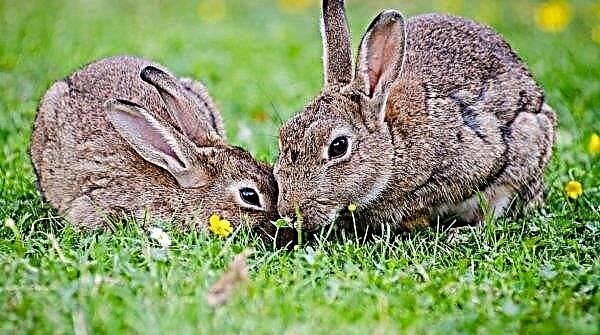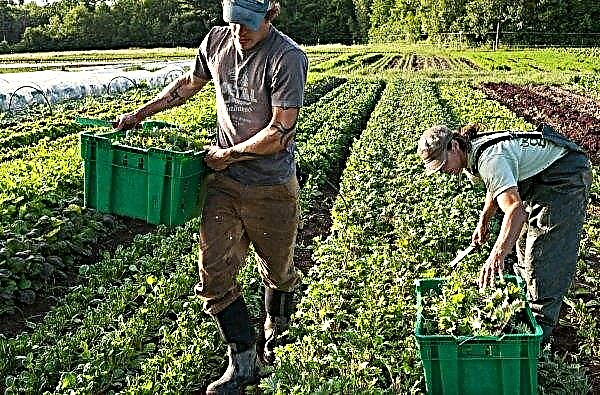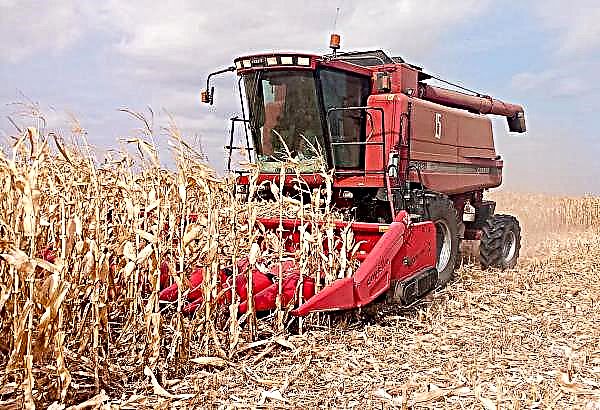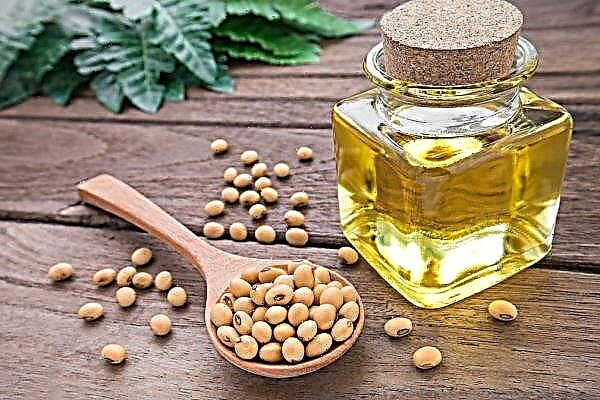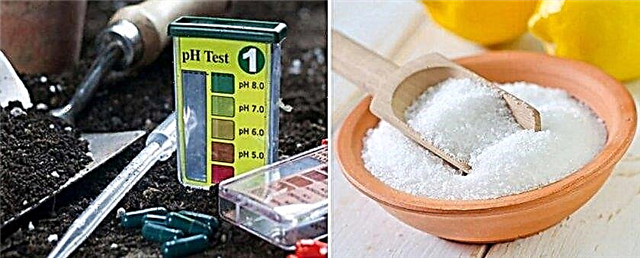Of the rich vegetable variety obtained in greenhouse conditions, the most popular are perhaps the most beloved cucumbers. Their planting and further care give experienced gardeners a particular pleasure, but even they, in the process, encounter some problems. In this article, we will talk about the important subtleties of growing cucumber fruits, in particular, about their optimal content in a polycarbonate greenhouse.
Varieties of cucumbers for growing in a polycarbonate greenhouse
There are a lot of cucumber varieties suitable for growing in a polycarbonate greenhouse, all of them have external, taste differences and agricultural characteristics.
We highlight the most popular varieties (top 10):
- "Annushka F1".
- "Gladiator".
- "Bouquet".
- "ABC".
- "Goosebump F1."
- Finger Boy.
- Benefit F1.
- "Minion F1".
- "Siberian garland."
- The Green Wave.





Important! Turning to the encoding, keep in mind that the unit indicates the very first, improved, generation obtained from crossing. Capital "F"Is the initial letter of the word"Filli"(Offspring).
Preparing a polycarbonate greenhouse
For the future successful germination of dense and beautiful cucumbers, in the polycarbonate greenhouse it is necessary to establish acceptable parameters, that is, to carry out full-fledged preparation for planting seeds:
- Disinfect the greenhouse with a solution of bleach (per 1 bucket of 400 g).
- Enrich the soil with overripe manure and peat in equal proportions, potash and phosphorus fertilizers.
- Track the percentage of ground acidity. The optimum pH is not more than 7.1.
- Organize the correct temperature (no more than +25 degrees during the day, at least +20 at night) and humidity level (for soil 60%, for future seedlings 80%).
- Track soil “warm-up” before disembarkation - from +15 to +18 degrees at a 10-centimeter depth.
Preparing seeds for growing
Immediately before planting, the farmer must thoroughly disinfect the soil (with a weak solution of hot potassium permanganate) and be sure to prepare the selected seed material for planting. The process consists in pickling each seed from possible diseases. To do this, they should be poured with a one percent solution of potassium permanganate (1 g per half a glass), left for 20 minutes, and then washed under running water. Next, the seeds must be warmed up in a thermostat or on a battery, at a temperature of 55-60 degrees (leave for 3-5 hours).
Technology for growing and caring for cucumbers
After working through all the necessary points, the selected variety is planted in prepared containers or immediately in the greenhouse land, where it goes through all stages of "growing up". However, in order for future shrubs to be strong and form dense and abundant ovaries, the farmer needs to adhere to some rules of agricultural technology.
Temperature mode
The temperature during the cultivation of cucumbers should vary in such ranges: +22 ... + 25 degrees in the daytime, +16 ... + 20 at night. The humidity in the greenhouse should not be less than 80 percent in the normal period, 90% in the fruiting period. Permissible soil moisture - 60%.
Important! The temperature in the soil should not be subjected to sharp jumps, but should be within +22 ... + 24 С. When it drops to +15 or less, the root system of cucumbers will cease to absorb water.
The use of certain options will help maintain optimal temperature conditions in the winter:
- air vents;
- automatic ventilation systems;
- furnace heating;
- infrared lamps;
- capacity of any volume with hot water.

Watering
As you know, a cucumber plant is 80% water, therefore, it needs extremely regular and plentiful watering.
Water requirements:
- warm (at least + 23C);
- harmful salts and fluorine should not prevail in the composition;
- at a high level of hardness, the water should be softened by adding wood ash to it (proportion of 5 tsp to 10 l of water).
The frequency of irrigation depends on the growth stage at which the plant is located:
- After planting, the seedlings are abundantly watered, then they return to the process every 4–5 days. The amount of water is 3-5 l / sq.m.
- During the flowering period, watering is done every 3 days, with strong heat every day.
- During fruiting, depending on the month: January – February - after 3-4 days, March –– after 3-4 days, April – May –– 2-3 days, June – July –– every 2 days or daily.

Top dressing
In addition to fulfilling the basic requirements for care, cucumber plants should be “fed” from time to time, using only certain and high-quality fertilizers:
- organic: mullein (humus), chicken droppings, peat compost, infusions of freshly cut grass;
- mineral: phosphorus-potassium, ammonia.
Did you know? The temperature in the cucumber can vary greatly with the outer shell and inner part. The pimply vegetable inside is usually warmer than the outside.
The scheme for feeding fruits in a polycarbonate greenhouse:
- The beginning is even before flowering, when leaves are already appearing on the seedlings. Fertilizers are suitable for both organic and mineral (complexes in which there is a lot of nitrogen).
- Continuation is carried out 7-14 days after the first feeding, when the first ovaries already begin to form and primrose appears. Fertilizers are the same, only the nitrogen content is significantly reduced (due to an increase in the amount of potassium).
- Before the third feeding, another 2 weeks should pass. Shrub actively fruiting. It is necessary to fertilize with potash and phosphorus top dressing and, in addition, nitrogen fertilizer containing sulfur.
- The last lure - after another 2 weeks, when fruiting is still ongoing. The main content of fertilizers is potassium and phosphorus.
Video: When and how to feed cucumbers in a greenhouse
Land cultivation
Loosening of the soil must be carried out regularly, as soon as the earth begins to acquire a compacted structure. In the process, it is important to be careful not to hook the root system. With timely treatment, a sufficient amount of oxygen will pass to the rhizomes, the plant will develop well and bear fruit in time. Weeds should be cleaned for the same reasons, you can remove them simply by hand or using a garden spatula. The main thing is that after removal, particles of weed roots do not remain in the soil.
Plant Shaping and Garter
With the help of the formation of stems in cucumber shrubs, it is possible to achieve an extension of the crop up to frost.
A few key recommendations:
- when the crop is harvested, the bush below should be completely cleaned of foliage and stepsons;
- an indicator that the cord serving as a support for the climbing stem, it is time to lower a few (to the level of the height of the cleaned lash), the plant reaches the upper part of the greenhouse (greenhouse). Then it is fixed at the starting point again. This creates the necessary conditions for continued growth.
Garter should be carried out even at the flowering and ovary stage, so the farmer will protect the plants from shade, shedding of flowers, as well as a rotted crop lying on the ground. For polycarbonate greenhouses, experienced agronomists recommend using the “vertical” method: place the upper plank of a wooden or metal frame under the greenhouse ceiling, and put the lower one on the ground. Between the structures, stretch a wire or a strong rope, to which the plant will be tied in the future. The number of stretch marks will depend on the number of shrubs.
For polycarbonate greenhouses, experienced agronomists recommend using the “vertical” method: place the upper plank of a wooden or metal frame under the greenhouse ceiling, and put the lower one on the ground. Between the structures, stretch a wire or a strong rope, to which the plant will be tied in the future. The number of stretch marks will depend on the number of shrubs.
How to prepare a greenhouse for winter?
Step by Step Actions:
- Remove plant debris. Clean the beds, the gaps between the plastic beds and polycarbonate.
- Rinse the polycarbonate thoroughly, starting from the inside walls, ending with the outside. For manipulation, use warm water with a mild cleaning agent. Remove cobwebs and accumulated dust in the corners.
- Refresh the soil, treat the greenhouse with disinfectants.
- To clear inter-row terracotta sides (“garden boards”).
- Remove all unnecessary trash accumulated during the summer season from the greenhouse. Cut ropes for garter shrubs, pick up garden tools, disassemble supporting structures.
What problems can you face?
Even experienced agronomists, in the process of growing greenhouse cucumbers, have some problems. However, each of them never gives up, and uses the advice tested over the years. Lurking troubles:
Lurking troubles:
- Dry the lower branches. Solution: tear off the lower leaves, remove the stem from the branch and lay the ring on the ground, securing it with a wire fork. Sprinkle with earth so that the stem top remains at the top. Continue proper care. Over time, the stem should grow the root, and the plant grow up.
- Lack of ovaries. Reasons: the environment is too humid in the greenhouse, the plant does not have male flowers, the soil needs fertilizer, the fruit is harvested less often than once a day. Solution: near the shrubs, it is necessary to put a large container with a mullein solution, which should be stirred periodically.
- Slow fruit growth. Solution: remove cucumbers 2-3 times a week, do not let them increase by more than 12 cm, pick vegetables every morning and evening (at least once a day).
Did you know? It is believed that the greenhouse, in its original form, was invented by the ancient Romans, who covered the very complex structures they created with natural mica to satisfy the “whims” of the plants grown. Scorching sunlight in combination with greenhouse-manure beds was enough for a good heating, and without lamps that did not exist yet, and other special devices.
Regardless of the variety, from among those suitable for cultivation in the conditions of a polycarbonate greenhouse, which will be chosen by the farmer, the future harvest will delight the abundance and taste of the fruits. The main thing here is to correctly organize all processes, from planting to all stages of growth, while observing the rules of care for both vegetables and their "housing".


